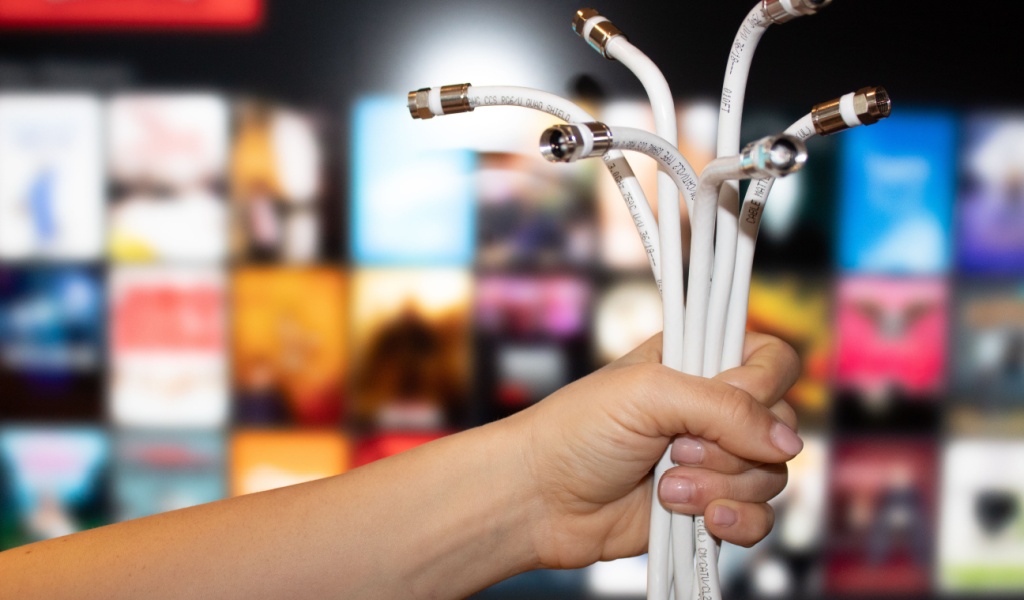A lot of the older generation still aren’t familiar with the phrase “cord-cutting”, and perhaps not very surprisingly, many others aren’t willing to buy into it even if they do. We’re talking about cable and satellite TV, of course. Ask an older person why they don’t want to switch to a more cost-efficient and convenient system and they’ll tell you it’s the technological side of it, “remembering a bunch of passwords”, as one person put it, that deters them from making the snip.
But at the same time, around 25% of American homes have done just that and given up their cable or satellite subscriptions for good. Predictably, most of these homes contain at least one resident who belongs to the millennial generation, but cord-cutting is an idea that can obviously benefit people of all ages. Especially given the fact that an average American spends more than $1,000 a year on pay-TV services.
Switching over to subscription-based streaming services not only allows you to cut this cost in more than half, but it also gives you the freedom to choose what you want to watch, when you want to watch it, and without those pesky advertisements interrupting your entertainment. Subscription-based streaming is the future of television, so you might as well get into it now!
So, if you feel ready to pick up those figurative scissors, but aren’t sure where to start, here’s a guide to cord-cutting.

1. Get a Digital Antenna
For a very reasonable price of $40 or so, you could be the owner of a digital antenna, which will capture a signal for your local channels in HD-quality. This is probably the best option you have to watch in-market sporting events and other live shows often broadcast by “the big four” networks. Not to mention, the cheapest too!
The Mohu AirWave has launched into the market just a few years ago, providing the function of a receiver for digital over-the-air signals and delivering them to streaming boxes connected to your TV, plug-in type devices, or even your smartphone or tablet. It offers a single streaming source with a channel-guide-type menu for live local content. Given the way it works, it might be an easier switch for those who vary of “remembering too many passwords”.
2. Get a Streaming Box
Smart TVs are definitely the future of television, but making that investment right now isn’t a possibility for everyone. If you don’t have enough dough on hand to buy a smart TV, you might want to consider a streaming device instead. Most of them take about 5 minutes to set up (you can get help for that too) and plug directly into the HDMI port of your existing television set.
Some of the most popular brands of streaming devices that are available include Roku, Google Chromecast, and Amazon’s Fire Stick. There are so many other options available in the market as well and they offer slightly varied services. All you need is to do some research before picking one to make sure it fits in with your streaming needs as well as being compatible with your existing equipment.
3. Select Your Streaming Services
For some users, giving up the ease of turning the TV on and just watching whatever is on at the moment is probably the hardest part to give up. With subscription-based streaming services, you are having to actively make the choice as to what you want to watch. Although you will see the advantage this provides, it can seem cumbersome to those who aren’t used to it.
However, it is very easy to watch shows after they’ve aired. Streaming services like Netflix, Hulu, and Amazon Prime all have agreements that allow them to upload full “new” seasons of TV shows a year after they’ve aired. However, these streaming giants also produce their own shows which are very good, and these are uploaded in one go on the date of the premiere. Additionally, streaming services are also starting to upload new episodes the day after they premiere in some cases – we can only assume this will become the norm in the future. Even streaming of live TV is provided by companies like Sling TV and DirecTV.
Sports fans are probably the ones at the most disadvantage right now because streaming services don’t offer a ton of options that are favorable to them. However, services like MLB.TV, NFL Game Pass, and NBA League Pass are very cheap alternatives to often bloated sports packages on cable TV and allow users to watch out-of-market games. We hope that in the future, streaming companies create a much better experience at a lower cost for sports fans as well.

4. Try Curated Content
As we mentioned earlier, one of the biggest shifts from traditional TV to subscription-based models is that you have to choose what to watch every single time you sit down to watch TV. This can be a bit taxing, and while it’s a common gag that people end up scrolling through the options for longer than they actually watch something, it’s also true.
One way to get past this “tyranny of choice”, as it’s sometimes referred to, is to try a curating site. These websites filter down the options to present to you only the best of what’s out there. Staffed by TV and movie enthusiasts who have a wealth of knowledge at hand, they are great at weeding out the best and most suitable options for your personal tastes and mood. While you still have to make the final choice, they make it easier for you by getting rid of the noise.
5. Cable TV Alternatives
While this is by far the most expensive cord-cutting option out there, it is also the one that provides you an experience that is as close to cable TV as possible. It works the exact same way as traditional cable, except that the channels are streamed over the internet rather than an analog wire.
Some of the most popular cable TV alternatives include Sling TV, AT&T TV Now, YouTube TV, Fubo TV, and Hulu with Live TV. Some internet service providers even have their own streaming services which are quite economical, like Spectrum Streaming, which only costs $14.99 per month. Sling TV carries everything from ESPN to Cartoon Network, so you don’t have to worry about giving up your favorite channels.



